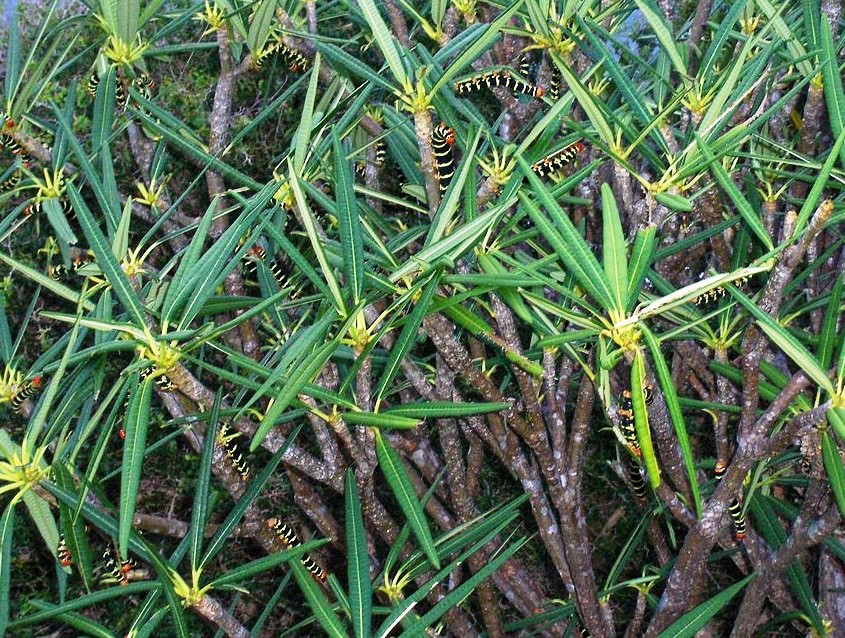Plumeria alba

|
|
Plumeria alba Common Names: White Frangipani, Nosegaytree, Pagoda
tree, West Indian jasmine Scientific
Classification Kingdom: Plantae Phylum: Angiosperms Class: Eudicots Order: Gentianales Family: Apocynaceae Genus: Plumeria Species: P. alba Binomial Name: Plumeria alba L. Synonyms: Plumeria revolutifolia Stokes, Plumeria hypoleuca var. angustifolia Gasp., Plumeria obtusa sensu auct. Morphological Description Plumeria alba is
a deciduous small tree or shrub, typically growing to 4–8 m (13–26 ft) in
height, occasionally reaching 10 m under ideal conditions. It is characterized
by: · Stem: Thick, succulent, brittle, with a greyish bark exuding a
milky, acrid latex when cut · Leaves: Oblong-lanceolate (15–30 cm long, 3–7 cm wide), spirally
clustered at branch tips, dark green, glossy, with prominent veins · Flowers: Fragrant, white with yellow centers, 5-petaled (5–7 cm in
diameter), borne in terminal cymes (10–20 cm long) · Fruit: Follicles (15–25 cm long), paired, woody, green turning
brown, containing numerous winged seeds The plant’s striking
flowers and milky sap are hallmarks of its ornamental and medicinal
significance (Gilman & Watson, 2015). Distribution and Habitat Plumeria alba is
native to Puerto Rico and the Lesser Antilles in the Caribbean but has been
widely naturalized across tropical and subtropical regions, including Southeast
Asia, the Pacific Islands, and parts of Africa. It thrives in: · Coastal Areas: Sandy, well-drained soils near shorelines · Dry Forests: Open woodlands with seasonal rainfall · Shrublands: Disturbed sites and cultivated landscapes It prefers full sun to
partial shade, temperatures of 20–35°C, and rainfall of 500–1,500 mm annually,
growing at elevations from sea level to 1,000 m (Coppen & Cobb, 1983). Ethnopharmacology Plumeria alba,
commonly known as white frangipani, is a tropical plant renowned for its
ornamental beauty and diverse medicinal applications. Traditionally, various
parts of the plant have been utilized to treat ailments such as malaria,
leprosy, and skin conditions including herpes and ulcers. The bark has been
applied to tumors, while the seeds are noted for their hemostatic properties.
Additionally, the plant has been used as a purgative, cardiotonic, diuretic,
and hypotensive agent. The flowers are employed in remedies for diarrhea,
cough, fever, and asthma. Phytochemical analyses have identified compounds such
as amyrin acetate, β-sitosterol, and iridoids like isoplumericin and
plumieride, which contribute to its pharmacological activities. Modern studies
have demonstrated that essential oils extracted from the flowers and leaves
possess significant antimicrobial and antioxidant properties, supporting their
traditional use in treating infections and oxidative stress-related conditions.
Furthermore, Plumeria alba has shown anti-inflammatory effects, which may be
beneficial in managing inflammatory disorders. While these findings highlight
the therapeutic potential of Plumeria alba,
further scientific research is necessary to fully validate its efficacy and
safety for medicinal applications. · Antimicrobial: In Togo, leaf extracts treat wounds and skin infections.
Methanol extracts inhibit Staphylococcus aureus (MIC 0.31 mg/mL) and Escherichia coli (MIC 0.62 mg/mL), due to plumbagin and
flavonoids (Tessou et al., 2013). · Anti-inflammatory: In India, bark pastes alleviate
rheumatism. 100 and 200 mg/kg doses of ethyl acetate (EAPA) and n-butanol (BPA)
fractions caused a significant (P ≤ 0.05-0.01) reduction in paw swelling in
both models. Erythrocyte sedimentation rate (ESR) and spleen weight decreased
significantly (P < 0.01) in arthritic rats treated with extracts. There was
significant (P < 0.05) improvement in thymus weight in EAPA treated rats
whereas significant (P < 0.01) improvement was also seen in haemoglobin
level (Hb) in diclofenac treated group. Motor incoordination and nociceptive
threshold were also significantly (P ≤ 0.05-0.01) improved (Choudhary, 2024). · Laxative/Vermifuge: In Cambodia, heartwood decoctions act as
purgatives and expel worms. The latex’s irritant properties stimulate
peristalsis (Sura et al., 2018). · Antidiabetic: In Togo, root infusions manage diabetes. Hydroalcoholic
extracts lower blood glucose by 20–25% in rats at 500 mg/kg, supporting
traditional claims (Tessou et al., 2013). · Analgesic: In Indonesia, flower extracts relieve toothache. Aqueous
extracts increase pain threshold by 30–40% in mice at 200 mg/kg (Vinotha et
al., 2021). ⚠ Toxicity Profile: The milky sap contains iridoids and
triterpenoids (e.g., lupeol), causing skin irritation (PII 1.5–2.0) and
blistering in sensitive individuals. Ingestion of large quantities (LD₅₀ >
5,000 mg/kg in rats) may lead to nausea, vomiting, and diarrhea due to its
purgative nature. Caution is advised in handling and internal use (Tyagi &
Menghani, 2014). Phytochemistry The plant’s bioactivity
stems from a diverse chemical profile: · Iridoids: Plumericin, isoplumericin (0.05–0.2%), with antimicrobial
and purgative effects · Flavonoids: Kaempferol, quercetin (0.1–0.3%), driving antioxidant
activity · Triterpenoids: Lupeol, β-amyrin, contributing to anti-inflammatory
properties · Volatile Oils: Linalool, geraniol, enhancing floral fragrance and sedative
effects These compounds,
identified via GC-MS, underpin its medicinal and ornamental value (Sura et al.,
2018). Additional Uses · Cultural: Flowers used in Hawaiian leis, Cambodian ritual offerings,
and Balinese coffin decorations · Culinary: Edible flowers consumed as fritters in Pacific Islands · Propagation: Easily grown from cuttings, dried for 3–7 days to prevent
rot (Gilman & Watson, 2014) References
External Links More Pictures |
|
| Compounds of Plumeria alba |
|
| References |